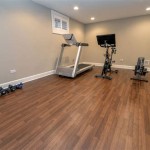Window Treatments For Floor To Ceiling Windows
Floor-to-ceiling windows are a stunning architectural feature that can flood a room with natural light and offer breathtaking views. However, these expansive windows also present unique challenges when it comes to window treatments. The wrong choice can overwhelm the space, block out too much light, or compromise privacy. Here are some key considerations and tips for selecting the perfect window treatments for floor-to-ceiling windows:
1. Consider Function and Privacy
Before choosing window treatments, determine their primary purpose. Are you primarily concerned with privacy, light control, or both? If privacy is a top priority, consider opaque fabrics or blinds that can be fully closed. For light control, sheer or semi-transparent fabrics allow natural light to filter through while providing some privacy. Dual-layer systems, such as curtains with blinds or shades underneath, offer versatility and allow you to adjust both privacy and light levels.
2. Choose the Right Fabric
The fabric you choose for your window treatments will significantly impact the overall look and functionality. Heavyweight fabrics, such as velvet or blackout lining, provide excellent light blocking and privacy but can appear bulky. Lightweight fabrics, like linen or sheer voile, allow more light to enter and create a more airy feel. Consider the style of your room and the desired ambiance when selecting the fabric.
3. Determine the Mounting Style
Floor-to-ceiling windows offer various mounting options for window treatments. Inside mount, where treatments are installed within the window frame, creates a clean, streamlined look. Outside mount, where treatments extend beyond the window frame, provides a more traditional and dramatic effect. Consider the window's size, shape, and surrounding décor when choosing the mounting style.
4. Motorization for Convenience
Motorized window treatments are an excellent option for floor-to-ceiling windows, especially if they are high or difficult to reach. Motorization allows you to open and close the treatments remotely using a remote control or smartphone app. This convenience is particularly beneficial for large or heavy treatments that may be challenging to operate manually.
5. Layer Different Treatments
Layering different window treatments can add depth, texture, and functionality to your space. For example, combining sheer curtains with blackout blinds provides both privacy and light control. Alternatively, layering different fabrics, such as linen curtains with velvet drapes, creates a visually stunning and versatile window treatment.
6. Consider Solar Shades
Solar shades are a practical solution for floor-to-ceiling windows as they offer excellent UV protection while maintaining visibility. These shades are made of a breathable fabric that filters sunlight without blocking the view. They are particularly suitable for rooms that receive a lot of direct sunlight.
7. Vertical Blinds
Vertical blinds are another popular option for floor-to-ceiling windows. They provide excellent light control and privacy and can be easily adjusted to suit your needs. Vertical blinds come in a variety of materials, including fabric, faux wood, and aluminum, allowing you to choose the best match for your décor.

5 Facts When Covering Your Floor To Ceiling Windows

Covering Floor To Ceiling Windows Window Treatment Solutions

Floor To Ceiling Florida Best Options For Windows

Large Window Shades Skyline Floor To Ceiling Blinds

Need To Cover Floor Ceiling Windows Creative Blinds

Floor To Ceiling Window Treatments Home Style Inspiration

Blinds For Large Windows Hunter Douglas One Stop Decorating

Floor To Ceiling Florida Best Options For Windows

Solutions For Floor To Ceiling Windows Control The Light Eoy View

Window Treatments For Large Windows In Omaha Floor To Ceiling








